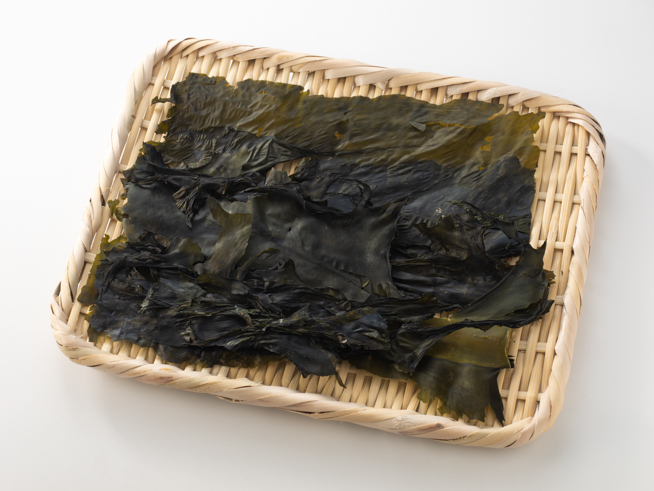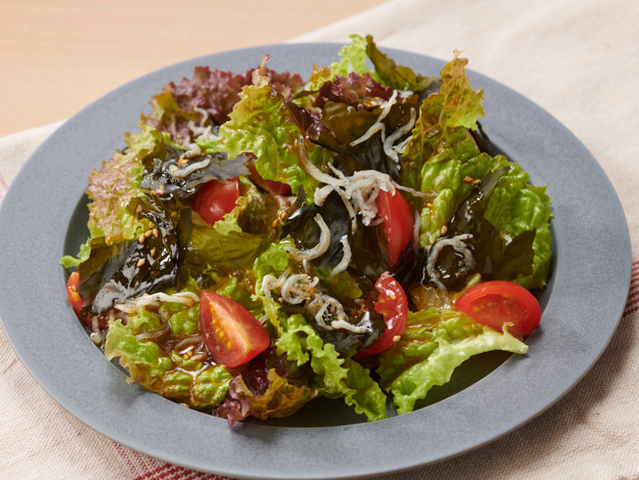
Ita Wakame (Menoha)

ShimaneIta Wakame (Menoha)
Classification (Large)
Seafood products
Classification (Small)
Seaweed products
Main ingredients used
wakame
When using downloaded images, please read the "Terms of Use" and clearly state that the source of the image is "Traditional Foods in Japan" by the Ministry of Agriculture, Forestry and Fisheries.
If the photo credits is stated, please include it as well.
Example of description
of the photo credits
Example of description when the photo credits is not stated
Source: "Traditional Foods in Japan" Ministry of Agriculture, Forestry and Fisheries
Example of description when the photo credits is stated
Source: "Traditional Foods in Japan" Ministry of Agriculture, Forestry and Fisheries
Photo credits:xxx
Region of inheritance
Coastal area of the Sea of Japan
Product overview (special characteristics and types)
Excluding a few parts, wakame seaweed is present in the seas around Japan and can be harvested in most seaside prefectures. Freshly-harvested wakame is washed before being laid out in sheets to dry for ita-wakame, which is popular in the San-in region. Wakame, which grows with nutrients from the rich forests of Shimane flowing into the Sea of Japan, is harvested from March to May and then dried and processed before being shipped. Because it is not cooked or seasoned in any way, ita-wakame offers the wakame’s original aroma and taste. It is rich in marine minerals such as iodine and calcium, making it highly nutritious value. It’s so thin you can see right through it, and carries both the delightful scent of the sea and a crispy texture.
As it’s a dried food, ita-wakame has a long shelf-life and can be eaten all year round. However, the ita-wakame on store shelves during March to April uses young sprouts and is said to be especially delicious.
History and culture
There is mention of using wakame in the Izumo Fudoki, which was completed in 744. Wakame is a common food with a long history in the Izumo region, with events related to wakame such as the Mekari ritual conducted at Hinomisaki Shrine, located in Izumo’s Taisha district.
Although natural wakame had long been eaten throughout Japan, aquafarming technologies were developed in the Tohoku region around 1955 and throughout Japan. Aquafarming in Shimane Prefecture peaked in 1974 at approximately 3,300 tons, and declined to one-tenth of that volume in 2009. The seaweed produced here used to be a delicacy offered to the Showa Emperor, but nowadays it’s mostly eaten in the San-in region and is rarely found nationwide.
Production method
Natural wakame releases seeds in the spring, and these seeds attach themselves to rock. The seaweed grows while absorbing nutrients from the ocean, and is harvested from March to May the following year. Farmed wakame is created by attaching seeds to lines in the spring and managed in tanks on land. As the ocean temperature drops in autumn, the lines hosting the wakame are transferred to offshore aquafarms where the seedlings absorb the ocean’s rich nutrients. The wakame grown is then harvested in the spring of the following year.
The collected wakame is carefully washed with water within four hours of harvesting. During this time, much care is necessary to prevent the umami of the wakame seaweed from leaching out. The fronds of washed wakame are spread and arranged one at a time on a slatted board before being dried at low temperature for 24 hours to produce the sheet-like ita-wakame.
Conservation and succession efforts
The number of aquafarmers has been on a downward trend since the mid-1970s due to aging farmer population and the complexity of managing seedling lines during the summer. Recognizing this problem, the Matsue Regional Office of Fisheries Affairs started to actively support aquafarmers. In 2008, there was a revival of aquafarming testing in Izumo’s Sagiura district for the first time in 15 years, which was big news for the local region. Furthermore, to promote labor saving and to pass down techniques, the Wakame Seaweed Farming Manual and the Wakame Seaweed Processing Manual were created in 2010 to promote new aquafarming techniques to aquafarmers and to document processing techniques.
Main consumption method
Ita-wakame features the aroma of the ocean and a perfect balance of saltiness and umami, making it enjoyable in various dishes. Recommended ways of enjoying this food are eating it as-is, or as hand-crushed furikake sprinkled on rice, or lightly roasted on a stove or other source of heat before being eaten to make most of its texture. It goes well with various ingredients and dishes, and is popular as an appetizer for alcohol or a snack for tea, sprinkled on tofu or miso soup as a condiment, or mixed into salads and other dishes.
At-home recipes:Salad with plenty of ita-wakame

Ingredients
Ita-wakame
75 g
Sunny lettuce
2 leaves
Cherry tomato
6 tomatoes
Dried young sardines
15 g
Japanese-style dressing
2 tablespoons
How to make
Break sunny lettuce leaves by hand into bite-sized pieces and cut cherry tomatoes in half.
Put ita-wakame and the vegetables cut in 1 above in a dish, sprinkle dried young sardines, and pour dressing over the top.

